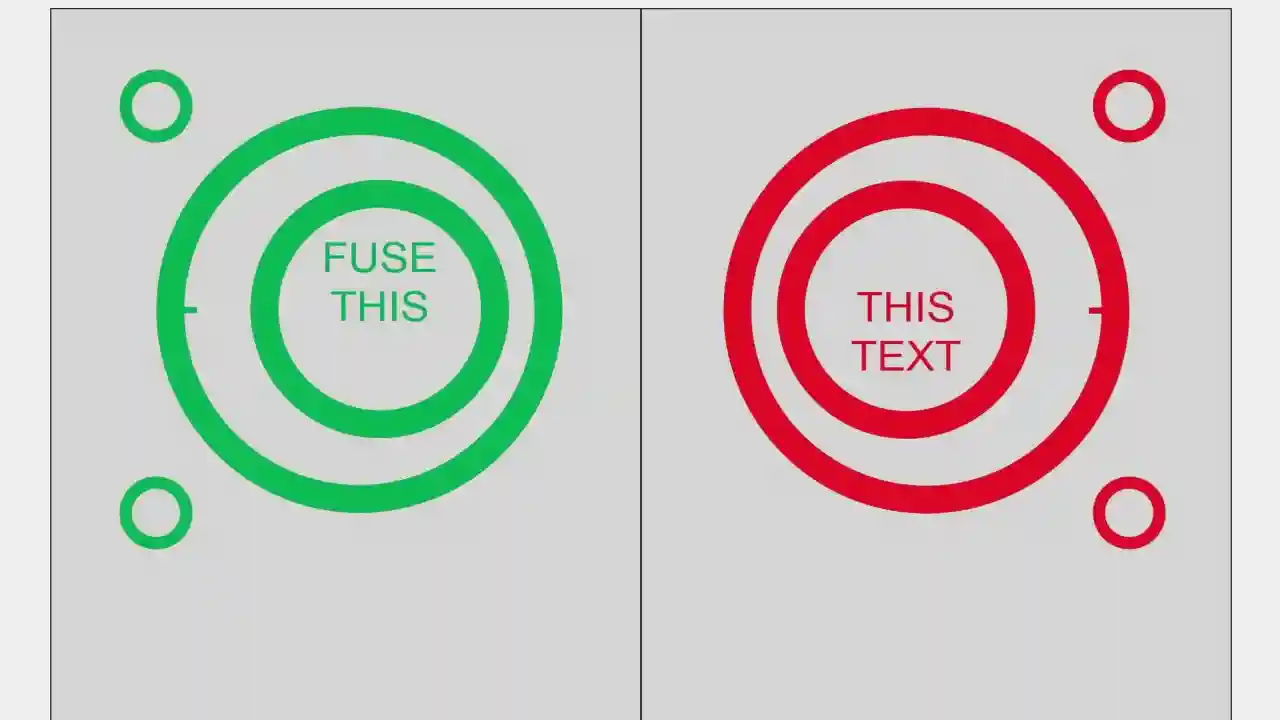In the realm of vision therapy and sports performance, eccentric circles eye training has emerged as a powerful technique for enhancing visual skills and eye coordination. This article delves deep into the world of eccentric circles eye training, exploring its benefits, methods, and applications across various fields.
What is Eccentric Circles Eye Training?
Eccentric circles eye training is a specialized visual exercise designed to improve eye movement control, fixation stability, and peripheral awareness. The technique involves tracking moving targets along circular paths while maintaining central fixation on a stationary point. This unique approach challenges the visual system in ways that traditional eye exercises often miss.
Key Components of Eccentric Circles Eye Training
- Central fixation point
- Moving peripheral targets
- Circular motion patterns
- Varied speeds and directions
- Progressive difficulty levels
The Science Behind Eccentric Circles Eye Training
To understand the effectiveness of eccentric circles eye training, it’s essential to grasp the underlying principles of visual perception and oculomotor control.
Visual Processing and Eye Movements
Our visual system relies on complex interactions between the eyes and brain to process information from our environment. Two primary types of eye movements are involved in this process:
- Saccades: Rapid eye movements that shift our gaze from one point to another
- Smooth pursuit: Slower, continuous eye movements that allow us to track moving objects
Eccentric circles eye training targets both of these movement types, challenging the visual system to improve coordination and control.
Neural Plasticity and Vision
The concept of neural plasticity plays a crucial role in the effectiveness of eccentric circles eye training. Our brains have the remarkable ability to adapt and reorganize neural pathways in response to new experiences and challenges. By consistently practicing eccentric circles eye training, we can stimulate the visual cortex and associated brain regions, potentially leading to improved visual processing and performance.
Benefits of Eccentric Circles Eye Training
Incorporating eccentric circles eye training into your visual fitness routine can yield numerous benefits:
- Enhanced peripheral awareness: By training the eyes to track moving targets while maintaining central fixation, individuals can improve their ability to detect and respond to peripheral stimuli.
- Improved eye movement control: The circular tracking patterns in eccentric circles eye training help refine smooth pursuit movements and saccadic accuracy.
- Better visual attention and focus: Regular practice can enhance the ability to maintain focus on a central target while simultaneously processing peripheral information.
- Increased visual processing speed: As the visual system becomes more efficient at tracking and processing moving targets, overall visual processing speed may improve.
- Reduced eye strain and fatigue: Strengthening eye muscles and improving coordination can lead to reduced eye strain during prolonged visual tasks.
- Enhanced sports performance: Athletes in various sports can benefit from improved depth perception, hand-eye coordination, and spatial awareness.
- Potential aid in vision therapy: Eccentric circles eye training may be beneficial for individuals with certain visual disorders or those recovering from eye injuries.
How to Perform Eccentric Circles Eye Training
To get started with eccentric circles eye training, follow these steps:
- Set up your training space: Choose a quiet area with good lighting and minimal distractions.
- Create or obtain training materials: You can use specialized software, mobile apps, or physical tools like the Marsden ball for eccentric circles eye training.
- Establish a central fixation point: This could be a small dot or object at eye level, about arm’s length away.
- Introduce moving targets: Begin with slow-moving targets traveling in circular paths around the central fixation point.
- Maintain central fixation: Keep your eyes focused on the central point while being aware of the moving targets in your peripheral vision.
- Track without moving your eyes: Use your peripheral vision to follow the moving targets without shifting your gaze from the central point.
- Gradually increase difficulty: As you improve, increase the speed of the moving targets, add multiple targets, or introduce more complex circular patterns.
- Practice regularly: Aim for short, frequent sessions (5-10 minutes) rather than longer, infrequent ones.
Eccentric Circles Eye Training Exercises
Here are some specific exercises to incorporate into your eccentric circles eye training routine:
1. Basic Circular Tracking
- Focus on a central point
- Have a partner move a small object in a circular path around the central point
- Track the object with your peripheral vision while maintaining central fixation
- Perform clockwise and counterclockwise rotations
2. Multi-Circle Challenge
- Set up three concentric circles around a central fixation point
- Place moving targets on each circle, traveling at different speeds
- Practice tracking all targets simultaneously using peripheral vision
3. Figure-Eight Pursuit
- Create a figure-eight pattern around the central fixation point
- Follow a moving target along this pattern without moving your eyes
- Gradually increase speed and add complexity to the figure-eight shape
4. Rhythm and Direction Changes
- Begin with standard circular tracking
- Randomly change the direction and speed of the moving target
- Challenge yourself to quickly adapt to these changes while maintaining central fixation
5. Digital Eccentric Circles Training
- Utilize specialized software or mobile apps designed for eccentric circles eye training
- These digital tools often offer customizable difficulty levels and progress tracking
Applications of Eccentric Circles Eye Training
The versatility of eccentric circles eye training makes it valuable in various fields:
Sports Performance
Athletes across many sports can benefit from eccentric circles eye training:
- Baseball and cricket: Improved tracking of fast-moving balls
- Basketball and football: Enhanced peripheral awareness for better passing and defense
- Tennis and table tennis: Quicker reaction times and improved ball tracking
- Martial arts: Better spatial awareness and faster response to opponents’ movements
Vision Therapy
Eccentric circles eye training may be incorporated into vision therapy programs for:
- Amblyopia (lazy eye)
- Strabismus (crossed eyes)
- Convergence insufficiency
- Visual processing disorders
Occupational Applications
Certain professions that require keen visual skills can benefit from eccentric circles eye training:
- Pilots
- Air traffic controllers
- Surgeons
- Security personnel
- Professional drivers
Reading and Learning
Students and avid readers may find eccentric circles eye training helpful for:
- Improving reading speed
- Enhancing comprehension
- Reducing eye strain during prolonged reading sessions
Integrating Eccentric Circles Eye Training into Your Routine
To maximize the benefits of eccentric circles eye training, consider the following tips:
- Start slowly: Begin with simple exercises and gradually increase difficulty as you progress.
- Be consistent: Aim for regular, short training sessions rather than infrequent, long ones.
- Combine with other eye exercises: Incorporate eccentric circles eye training into a comprehensive visual fitness routine.
- Stay motivated: Track your progress and set achievable goals to maintain enthusiasm.
- Listen to your body: If you experience eye strain or discomfort, take a break and consult an eye care professional if symptoms persist.
- Customize your training: Tailor exercises to your specific needs and goals, whether for sports, profession, or general visual improvement.
- Use proper lighting: Ensure your training area is well-lit to reduce eye strain.
- Stay hydrated: Proper hydration is essential for optimal eye health and performance.
Potential Challenges and Considerations
While eccentric circles eye training offers numerous benefits, it’s important to be aware of potential challenges:
- Initial difficulty: Some individuals may find the exercises challenging at first, requiring patience and persistence.
- Time commitment: Consistent practice is necessary to see significant improvements.
- Individual variations: Results may vary depending on factors such as age, existing visual abilities, and dedication to training.
- Not a substitute for medical treatment: Eccentric circles eye training should complement, not replace, professional eye care.
The Future of Eccentric Circles Eye Training
As research in vision science and sports performance continues to advance, we can expect to see further developments in eccentric circles eye training:
- Virtual reality integration: VR technology may offer immersive and highly customizable training experiences.
- Artificial intelligence: AI-powered training programs could provide personalized exercise regimens based on individual progress and needs.
- Expanded applications: New uses for eccentric circles eye training may emerge in fields such as rehabilitation and cognitive enhancement.
Conclusion
Eccentric circles eye training represents a promising approach to enhancing visual performance and eye health. By challenging the visual system in unique ways, this technique offers benefits ranging from improved sports performance to potential aid in vision therapy. As with any training program, consistency and proper guidance are key to achieving optimal results. A professional seeking to enhance job-related visual skills, or simply someone interested in maintaining good eye health, eccentric circles eye training may be a valuable addition to your visual fitness routine.





